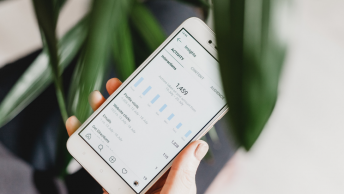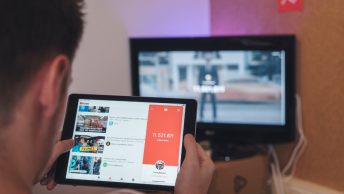If you have thousands of followers and likes on social media, you should definitely give yourself a pat on the back.
However, if you notice that your likes and followers are not automatically landing you the sign-ups, conversions, engagement, or sales, you are not alone.
It is easy to get lost in the sheer numbers and focus on your follower count, only to realize that they have only provided surface value to your business too late.
Using Social Media Thoughtfully
Ultimately, you don’t want to just gain numbers, but genuinely engage with this audience and learn about them as it grows. You can use social media to learn more about:
- Your audience’s preferences
- How many followers turn into website traffic
- Audience engagement with your content
- The percentage of traffic that converts into your desired achievement (for example sign-ups or sales)
It’s more than just a numbers game. Let’s dig into 5 metrics that truly can help you gauge your efficacy and success.
SEE ALSO: Top 7 Social Media Techniques For Any Branding Campaign
1. Social Reach

Reach is one of the most telling metrics you can track. This is a measure of how many people your posts are actually reaching. The higher this number is, the more exposure your content is getting on the web.
While reach is not the be-all-end-all of social media success, and should definitely not be the only metric you take into consideration, it is important. It indicates how well your accounts and content can attract new followers. So, how do you measure and track it?
Analyze your campaign reach, as well as the reach of individual posts. Reach metrics are generally easy to find using insight or analytics pages and tabs on your social media profiles.
2. Referrals
You want to know how effectively your social media content leads people to your website by evaluating referral traffic. You can check this using Google Analytics. First, go to Acquisition -> Social and take stock of which of your social media networks are driving the most traffic to your site. You also want to notice how those visits are converting.
If you notice that your referral traffic is low, take a look at your posts. If they don’t have a Call To Action at all, or have very weak calls to action, this might be a big part of the reason why.
You want to give people a reason to click.
3. Bounce Rate
A percentage of users will always visit your home page and never take a deeper dive into your website. You want to know exactly how high this percentage is. To find out how often this happens, you will want to take a look at your bounce rate metrics. It can give you a lot more information than you think.
For example, maybe your bounce rate is high from your social media traffic. What can this tell you?
It reveals some important strengths and weaknesses of your digital branding strategy. On the plus side, it means that your social media posts are very effective. They are enticing your following and getting them to click on your links and visit your site.
However, on the negative side, it also reveals that something about your site is not delivering properly. It could be the look of your site. It could be the content there. Also, it could be that it is not responsive or user-friendly enough. In this case, you need to take an objective look at your site and figure out the problems.
SEE ALSO: How to Reduce Your Bounce Rate in 5 Steps
How Do You Track Your Bounce Rate?
You are likely familiar with understanding the overall bounce rate of your site through Google Analytics. To understand your social traffic bounce rate, you will have to dig deeper.
Go to Acquisition -> All Traffic, then segment by channels. For each of your social channels, examine the bounce rate. You can also sort from high to low to see which channels you are the most successful on and which need more attention.
How Do You Improve Your Social Media Bounce Rate?
One thing you can do to improve this is carefully crafting your social posts to make sure they are consistent with what your site offers. If you promise something to people in a CTA or link, it better be there for on your site for those who have clicked.
You also might need to spruce up your landing page to make sure it is relevant, inviting, and inspires visitors to navigate to other pages on your site. If you are missing CTAs or have lackluster ones, work on this.
4. Engagement
Many people brag about their follower counts, however, follower count is not everything.
In 2019, an Instagram Influencer with a massive 2.6 million person following made headlines for using her platform to launch a clothing line that failed. In order for the company @Arii was working with to continue to produce clothing for her, she needed to meet a minimum of selling 36 of each of her 7 products. Despite her massive IG following, she could not manage that.
She later released this post explaining the situation after the clothing line’s failure went viral:
The Importance of Genuine Interaction
Whether your following is large or small, the real value will come from their engagement. Do people interact with your posts and share them? Are your posts representing your brand well and helping to grow your digital presence? Is your community active? How do they feel about you?
Analyzing these engagement metrics can give you some insight:
- Your average engagement: likes, shares, comments, etc over a period of time (a week or a month, for example)
- Your amplification rate: the number of post shares divided by the number of people who engaged with it
- Virality rate: The total number of shares divided by the views and then multiplied by 100.
If you want to understand more about measuring and leveraging engagement metrics, take a look at our blog post specifically exploring engagement metrics.
5. Social Media Audience Demographics

You want to know as much about your audience as you can so you can make content that truly engages them. You want to know things like:
- Age
- Gender
- Education
- Location
- Ethnicity
- Employment
If your strategy is on point, the audience of your social media posts will match up with what you imagined the ideal customer for your products or services to be. You want the same people who would be likely to make purchases interacting with and discovering your social posts.
If they don’t line up, this could mean a few things. Maybe your content is not appealing to your target audience and needs to be revised. Also, it is possible that you need to reevaluate which target audience you are trying to reach.
Final Thoughts
While numbers matter when it comes to social media, and having a large following is great, a successful social media strategy depends on so much more than that. A digital brand with a strong social media presence will not only have a lot of followers but an engaged fanbase and community that results in social reach and conversions.
Having a following of 1000 people who are genuinely passionate about and interested in your brand, products, or services, can be more powerful than having a following of 1 million people who are not.
Which social media metrics do you think are the most important? Comment below…











